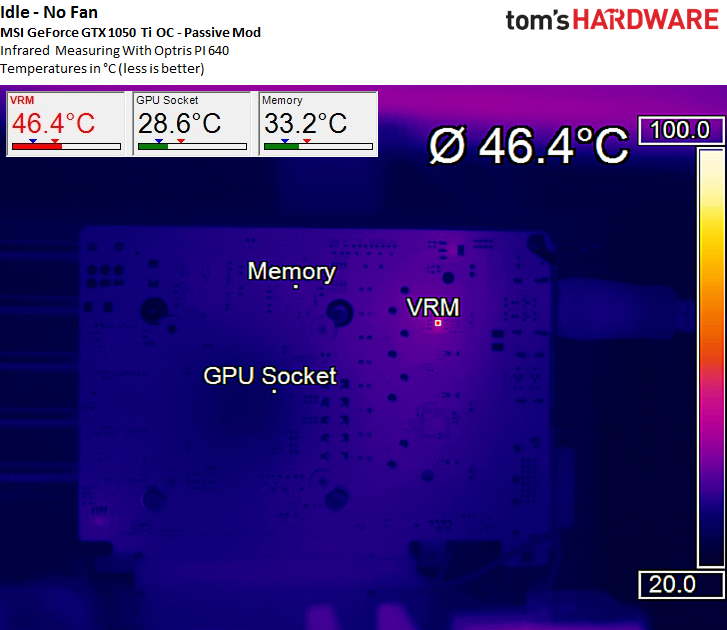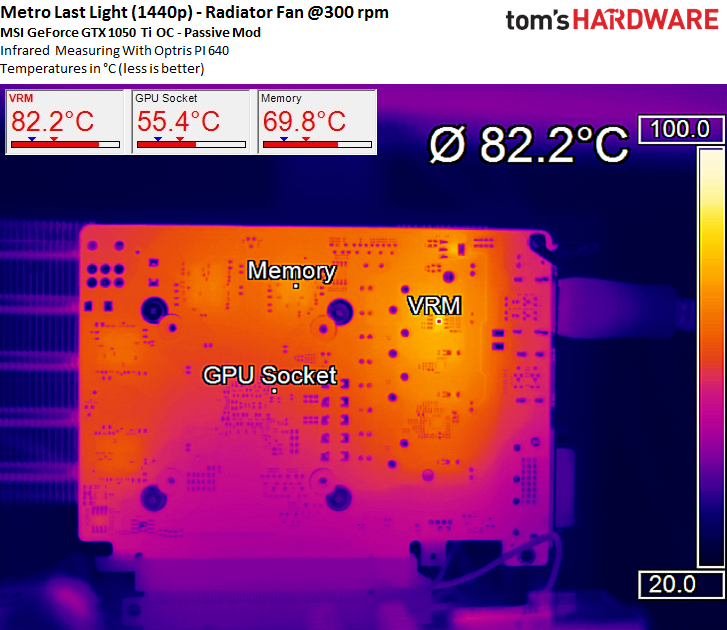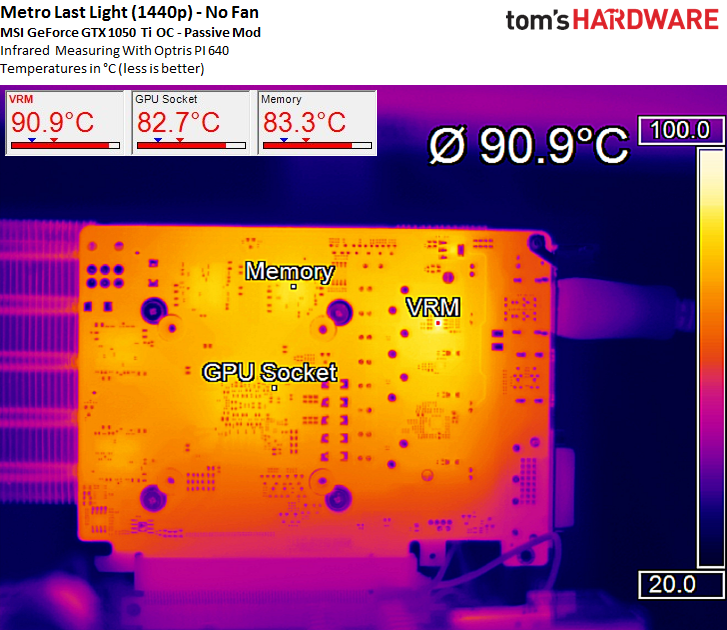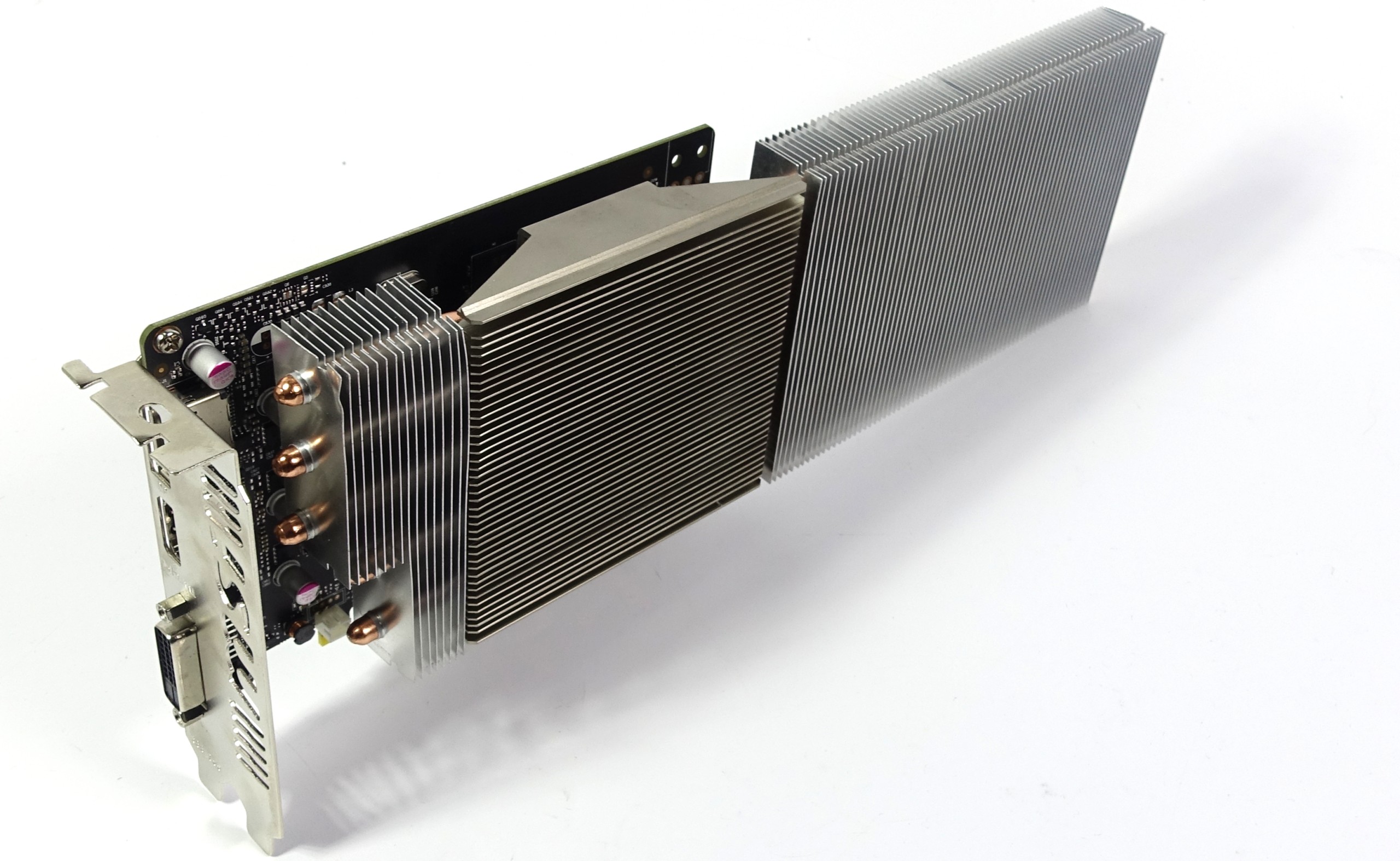Nvidia GeForce GTX 1050 Ti Passive Cooling Mod
Infrared Temperature Measurement
In order to obtain a more detailed understanding of exactly how our modifications affect performance, we measured temperature changes through an infrared camera. Up until now, we were only measuring the GPU's thermal situation. But a graphics card contains many other components that are sensitive to overheating, and may critically influence performance.
At idle, low clock rates and voltages yield a nice, cool board. Temperatures across the PCB are virtually undetectable by the thermal camera. Only the VRMs register a bit of warmth.
If we put the card into a case with minimal airflow, the passive cooler does its best to keep Nvidia's GP107 cool. Even next to MSI's stock configuration, it fares well enough, too. The card glows orange in our infrared image, but these temperatures are typical of any graphics card cranking through a game like Metro: Last Light.
It's only when the card is installed into a completely passive PC and allowed to run for an hour that it saturates from edge to edge with heat. In spite of the thermal challenges this environment presents, the memory still runs cool enough to prevent any heat-related damage.
We have to conclude that this passive cooling mod is quite successful from a purely thermal standpoint, even if we had to battle a little bit with its placement.
Get Tom's Hardware's best news and in-depth reviews, straight to your inbox.
Current page: Infrared Temperature Measurement
Prev Page Push it to the Limit! Next Page Final Thoughts
Igor Wallossek wrote a wide variety of hardware articles for Tom's Hardware, with a strong focus on technical analysis and in-depth reviews. His contributions have spanned a broad spectrum of PC components, including GPUs, CPUs, workstations, and PC builds. His insightful articles provide readers with detailed knowledge to make informed decisions in the ever-evolving tech landscape
-
AndrewJacksonZA Thank you for the really nice article Igor. It was an unexpected surprise and a pleasure to read. :-) Very interesting to read.Reply -
Poozle you know setting the fans to even minimal (20-30%) where you cant detect an audible difference would be safer and nearly as quiet... but I digressReply -
FormatC The problem is, that the marketing is telling us that it works. I ordered an original passive card directly from a manufacturer and will check it in a short follow-up. Without any airflow in the case this must fail ;)Reply -
AndrewJacksonZA Reply
It immediately reminded me of Sapphire's R9 Fury Tri-X:19136703 said:That giant cooler is so funny looking on that little card. :)
-
FormatC Same principle, but the used cooler is 4 years old.Reply
It seems that Sapphire copied the idea ;) -
thor220 It looks like the large tail of that Cooler isn't even doing anything. No point in making a passive cooler that big if it can't transfer the heat.Reply
I would much rather see a passive water cooled setup with no fans, only the pump. -
TJ Hooker Reply
What makes you say that? The heat pipes extend the length of the cooler, even the fins at the end should be absorbing and dissipating some of the heat.19139141 said:It looks like the large tail of that Cooler isn't even doing anything. No point in making a passive cooler that big if it can't transfer the heat.



